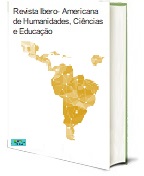PATOLOGIAS DE PAVIMENTOS ASFÁLTICOS E SUAS RECUPERAÇÕES – ESTUDO DA AVENIDA RANUFO PAES DE BARROS
DOI:
https://doi.org/10.51891/rease.v8i5.5209Palavras-chave:
Pavimento asfáltico. Patologia. Reparo.Resumo
O presente artigo vem nos esclarecer acerca de alguns aspectos técnicos e patológicos que podem interferir na qualidade do pavimento asfáltico da Avenida Ranufo Paes de Barros. A falta de um sistema de drenagem e manutenção adequada da via, a presença de intemperes a qual é submetida somada ao tráfego constante dos universitários, visitantes que desejam ingressar na universidade e dos colaboradores que trabalham na universidade, além da única pista de pouso de pequenas aeronaves da cidade a qual a avenida dá acesso fez com houvesse uma restauração recentemente. Após dois anos de reabilitação da via são encontrados inúmeros problemas, dentre eles: desagregação do revestimento asfáltico, falta de sistema de drenagem adequado entre outros, colocando em risco o deslocamento de todos que dela dependem. Se esses problemas não forem adequadamente solucionados e restaurados ou recuperados poderão causar problemas maiores onde somente uma reconstrução completa dessa via resolverá as patologias e danos presentes.
Downloads
Downloads
Publicado
Como Citar
Edição
Seção
Categorias
Licença
Atribuição CC BY

